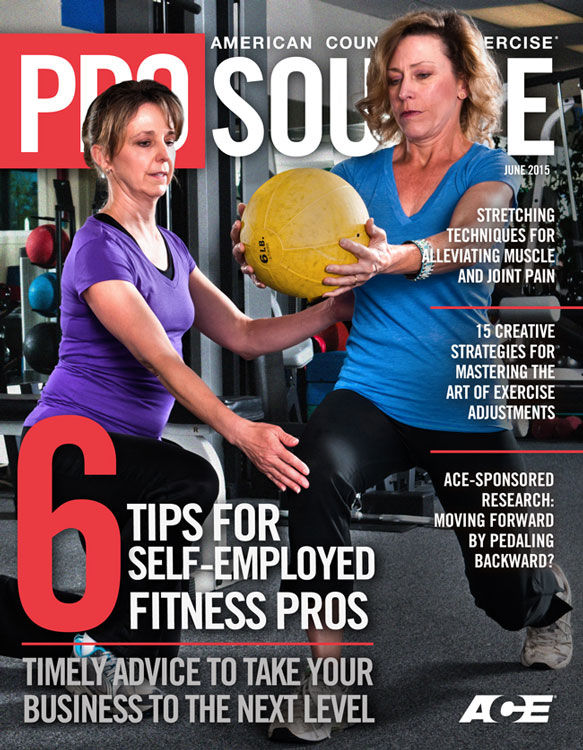
For many fitness pros, being self-employed in the fitness industry is a dream come true. But it’s also somewhat precarious, with a risk of burnout and no guarantee of longevity. Fortunately, it’s easy to bypass some of the most avoidable mistakes solo self-employed fitness pros make. Following the advice here will help you conduct your fitness business with greater success.
Mistake to Avoid #1: Inviting Too Many Distractions Into Your Workday
If you are a self-employed fitness pro working from home, you already know that large and small distractions are around every corner. If it’s not the temptation to endlessly scroll down your Facebook News Feed or clean up in the kitchen, it’s perhaps your toddler kicking up a fuss in the next room.
If you work out of a gym, you likely face a whole different set of distractions. For example, there are always opportunities to chitchat with colleagues and clients between sessions or classes. And while it’s nice to catch up with others, socializing can eat away at the time you might need to conquer necessary paperwork and other admin duties.
The more you succumb to distractions, the more you potentially derail the job you’ve created for yourself. As a work-from-home fitness writer, I’d argue that my ability to remain self-employed for more than 12 years comes down to maintaining a decent degree of discipline most of the time.
That’s not to say I never take breaks, but when I catch myself engaging in a task during a workday that’s unrelated to work, I contemplate if that activity is helping me be better at my job. Any distraction on the Internet can be postponed: I use a desktop/mobile app called “Pocket” to save articles for future reading. YouTube has a “Watch Later” feature, and if you click the upper right-hand corner of a Facebook post with a link or video in it, you can save it to look at later.
I do consider some tasks that are unrelated to my job, like laundry, as productive to my workday. Crossing this easy-to-do chore off my list early in the day builds momentum for getting things done. Plus, it provides a break from sitting at my desk and cuts down on household clutter, which, itself, can disrupt mental focus. To shine a spotlight on your own daily distractions, consider how every new activity either helps or hinders your workflow.
Mistake to Avoid #2: Saying “Yes” Too Frequently
When I was first testing the waters of self-employment, I worked a lot on weekends and taught an abundance of fitness classes each week. Not because I wanted to, but because I felt I had to in order to meet all my clients’ requests. It’s common for newly self-employed people to take on almost all the work that comes their way because saying “no” to a job—whether it’s a new client, additional fitness class or speaking engagement—translates to turning down income and possibly losing that potential client or opportunity forever. However, not everyone is a good customer for you, and that’s O.K.
Later in my career, I learned how to quell my urge to take on projects or fitness classes that didn’t thrill me much. Simply put, I realized that I control my self-employed business. If a client requests a tight deadline or someone needs a sub for a class that requires me to compromise family time or leisure time to complete the job, I’m 100 percent free to say, “No. Sorry. I’m booked.” If the job sounds appealing, I can always negotiate a higher fee for a quick turnaround. Assuming finances aren’t dipping to dire levels, most self-employed people have choices.
Mistake to Avoid #3: Allowing Clients to Dictate Your Value
Sometimes saying “no” to a project or a prospect, or even firing a current training client or giving up a class you've taught for a while, is less about time-management and more about establishing professional boundaries. I’ve walked away from more than one business partnership—that, incidentally, I really wanted—because the project parameters compromised the boundaries I’d set for my time, expertise and value as a service provider in the fitness industry.

In one case, a fitness company and I could not agree on a fee structure for a social-media management position. I chose to decline the company’s offer for a significantly lower fee than what I had proposed. One reason was because I predicted I was going to end up working the same number of hours as I had originally suggested to meet the client’s, and my own, expectations for results.
But the real deal-breaker for me was this: The client’s counteroffer seemed to reflect their perception about the role that social media played in their company—in other words, it just wasn’t a priority at this time. I was hesitant to put my heart and hard work into a position that the company didn’t see as all that valuable.
When it comes to assigning value (monetary or otherwise) to your self-employed work, the old adage, “The customer is always right,” doesn’t apply. Determine your own worth. Negotiate if appropriate. Trust your instincts.
Mistake to Avoid #4: Going Overboard with DIY
As a self-employed fitness pro, you might be used to doing a lot of things for yourself. When a piece of equipment breaks, the onus is on you to troubleshoot a fix. You might handle all your own client scheduling, billing and cancellations. However, there comes a point when too much DIY (i.e., do-it-yourself) can hurt your effectiveness and professional image. Plus, it can drain your time and energy.
Some self-employed fitness pros are so focused on the “money in” aspect of their business that they don’t consider how they might also benefit from strategizing a system for occasionally putting “money out.” Once you’ve attained enough of a positive cash flow, allow yourself certain business expenses, such as delegating tasks that you could do yourself for less money, but that a skilled professional will, frankly, do better and faster.
For example, you might be a popular, highly educated and skilled personal trainer. But if your marketing materials look like everything was “homemade” on a shoestring budget, you could be giving off the wrong impression to prospects that don’t yet know how great you are. Elevate your image by hiring a pro to help you put together an attractive website or blog. With free and low-cost templates for programs like WordPress, web design fees can remain quite reasonable even when you’ve enlisted a pro’s help. Online marketplaces like Fiverr can connect you to freelancers whose services include web and logo design, copywriting and more.
Likewise, a good headshot will stand out as more professional on your business-related Facebook, Twitter and LinkedIn profiles compared to a DIY smartphone selfie. When you project a message that you take your self-employed status seriously, others will pick up on it.
Mistake to Avoid #5: Ignoring What’s New and Now
Like many brands and services in the fitness industry, you might find the need to occasionally update or even entirely reinvent your business to keep current. Ten years ago, my main source of income was writing for consumer-based health and fitness magazines. I was making good money and keeping busy. However, two important shifts forced me to adjust my professional focus: (1) The magazine industry took a nosedive, and (2) the popularity of social media took off.

Although I still write for consumer-based magazines, I am now more likely to be blogging, managing social media or testing out fitness technology. None of these options were even on my radar a decade ago. Being self-employed, and doing it solo, is at once exciting and terrifying. You’re your own boss, creating a job out of nothing. As a result, your job security hinges on relevancy.
For example, I’ve been receiving an e-newsletter since 2004 from a man who runs a marketing business unrelated to fitness. I used to read every issue with interest and have purchased educational products from this person several times. But, lately, when the newsletter arrives in my email inbox, I just delete it. The format is the same as it was in 2004 and there’s nothing in these marketing emails inviting me to a blog or a Twitter account or a Facebook Page, which is where I consume most information now. The relevance of this person’s email is not the same as it was in 2004. But it easily could be.
While you don’t necessarily need a blog or a Twitter handle to be successful, it does help to keep your business offerings and communication up to date. Are you in stride with the latest training and/or instructing skills and education? Are your clients moving forward with current trends and preferences? How can you get there first?
Mistake to Avoid #6: Lacking Creativity About Creating Your Own Hours
I occasionally go clothes shopping on a Tuesday morning. The stores are virtually empty and there’s never a line for the changing rooms. Salespeople who spot me browsing around in the middle of a workweek often ask if I’ve got the day off. No, I just create my own hours.
However, even if you create your own hours in the big picture, the reality is, you might need to work around your clients' daily schedules. Perhaps you train multiple clients back to back in the early morning and then nothing until your next set of clients gets off work in the late afternoon/evening. That means you're faced with periods of "free time" throughout the day.
It's easy to fall into a trap of two extremes. You might either fill up you "free time" between classes or sessions with: (1) leisure activities that don't help move your business forward, or (2) additional work and chores, causing you to end a long day feeling burnt out. Where's the middle ground? Aim for periods of both focused work and time off throughout each day. If I go shopping on a Tuesday morning, I must work extra efficiently later on.
Another idea is to manage downtime between clients or classes with creativity. For example, you might be able to teach small-group training or a specialty class for people who are available during non-primetime hours, but can't afford your one-on-one sessions. Maximizing opportunities within the hours you want to be working will help you approach your self-made job with more energy, focus and creativity.

 by
by 




